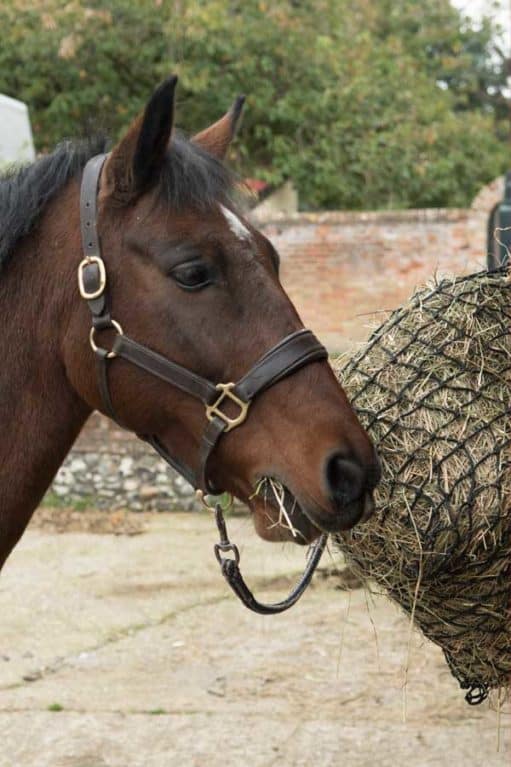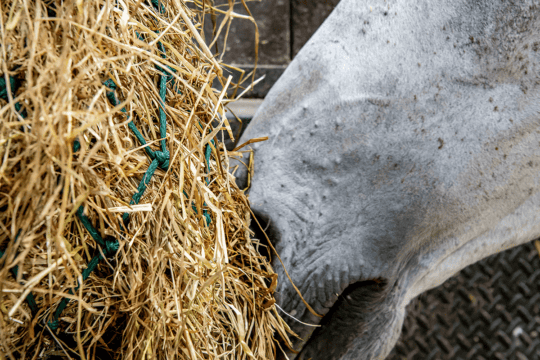Do you want to optimise your horse’s digestive system and get him glowing from within? Emily Jackson, Equine Nutritionist for Allen & Page Horse Feeds, provides some feeding management advice

Horses’ digestive systems have evolved for a high-fibre, low-starch diet, and are efficiently fuelled by 16–18 hours a day of constant foraging. Because of the expectation of a continuous supply of forage, the stomach continuously secretes acid. However, the modern-day environment for horses differs greatly to that of his wild ancestors, often involving stabling for long periods of time, ridden exercise and controlled feed intake with structured feeding patterns. This can potentially affect the sensitive digestive system and contribute to the development of equine gastric ulcer syndrome (EGUS).
Signs of EGUS may include…
- loss of appetite
- loss of weight and/or condition
- poor coat condition
- change in temperament/ behaviour
- poor performance or reluctance to work
- low grade, recurrent colic
- sensitivity when grooming or tacking up
While veterinary treatment varies from case-to-case, there are a number of management changes you can make that, alongside advice from your vet, may reduce the risk factors and likelihood of recurrence. Changes that mimic your horse’s natural lifestyle, such as increased turnout time, access to ad-lib forage and an alteration to bucket feed can all be beneficial. When looking at altering your horse’s diet, consider…
Reducing the amount of starch he receives per meal. Research suggests feeding a maximum of 1g per kilogram of bodyweight per meal. So, for a 500kg horse, he should receive no more than 500g of starch per meal. There are now many fibre-based bucket feeds containing ingredients such as unmolassed sugar beet pulp and linseed, which help to provide a low starch diet.
Did you know?
Traditionally, horse feeds predominantly contained large amounts of cereal grains such as barley, oats and maize, which are all naturally high in starch and can upset a sensitive digestive system.
Furthermore, when looking for a suitable bucket feed, not only should the feed be free from whole cereal grains to keep the starch level low, there are other ingredients that may be beneficial…
- oat feed and wheat feed are naturally high in fibre and contain beta-glucans that, which form a gel-like consistency in the stomach, slowing the digestion rate of the feed throughout the horse’s digestive tract and ensures the stomach remains fuller for longer. The slower speed in which the feed then passes through the digestive tract then enables maximum absorption of nutrients and encourages correct breakdown of starch, reducing the risk of hind gut acidosis
- magnesium carbonate and calcium carbonate are both well-known antacids, and another great addition that helps buffer gastric acid within the stomach
New from Allen & Page
Our recently launched feed Soothe & Gain is a high-calorie, low starch and low-sugar soaked feed. Awarded the British Equestrian Trade Association (BETA) assurance mark that highlights products suitable for horses prone to EGUS.
Soothe & Gain provides an excellent source of slow release energy, which is provided by the fibre and oil ingredients included in its formula – what’s more, these fibre sources are also high in beta-glucans. Being whole cereal grain and molasses free, it’s low in starch and sugar, ideal for those that react negatively to high-starch diets and to help keep well within the recommended maximum starch level per meal for horses with EGUS. Antacids, a probiotic and a blend of prebiotics to help support healthy digestion are also included.
When fed at the recommended level, Soothe & Gain will provide the horse with a fully balanced diet inclusive of essential vitamins and minerals as well as a careful selection of herbs, including mint, nettle, dandelion and fenugreek.
For further information about Allen & Page products, visit allenandpage.com















